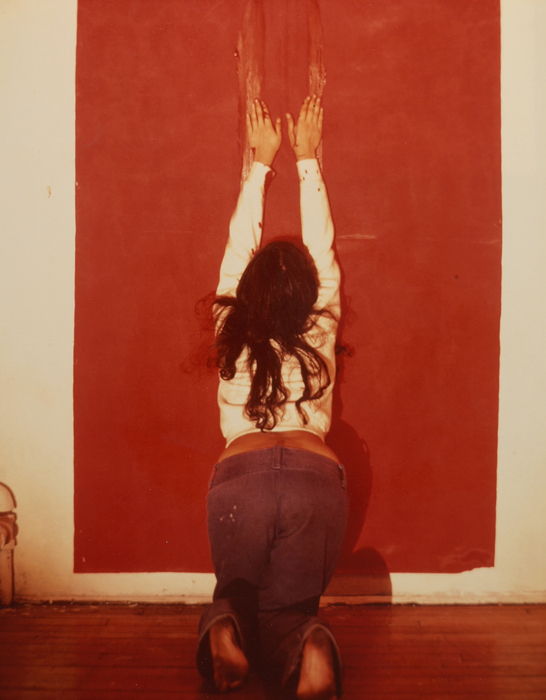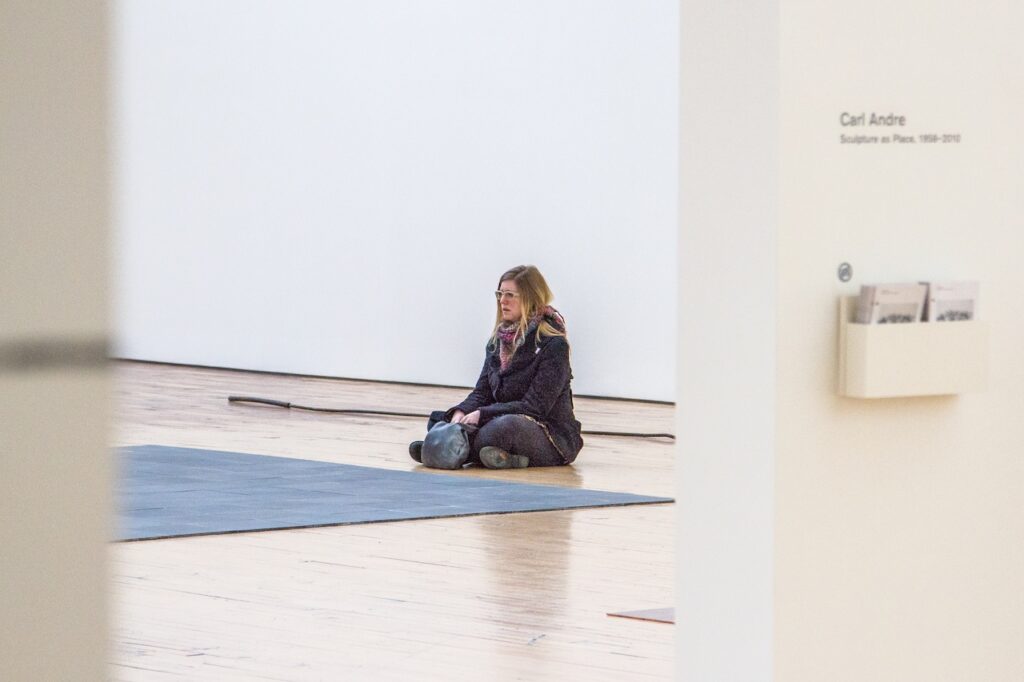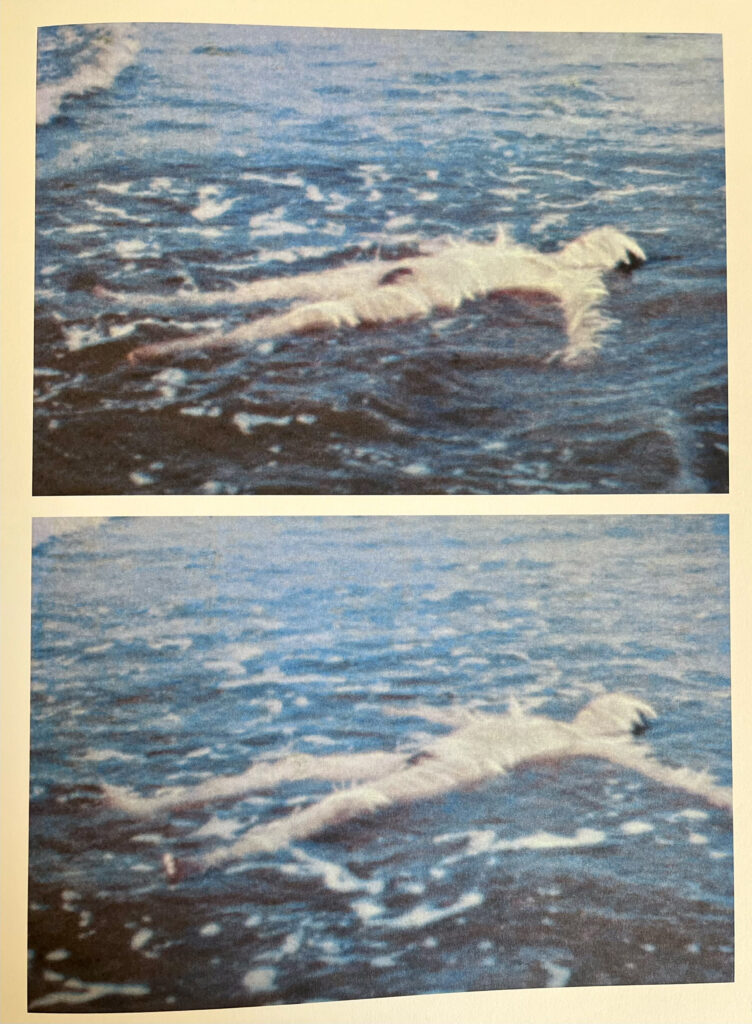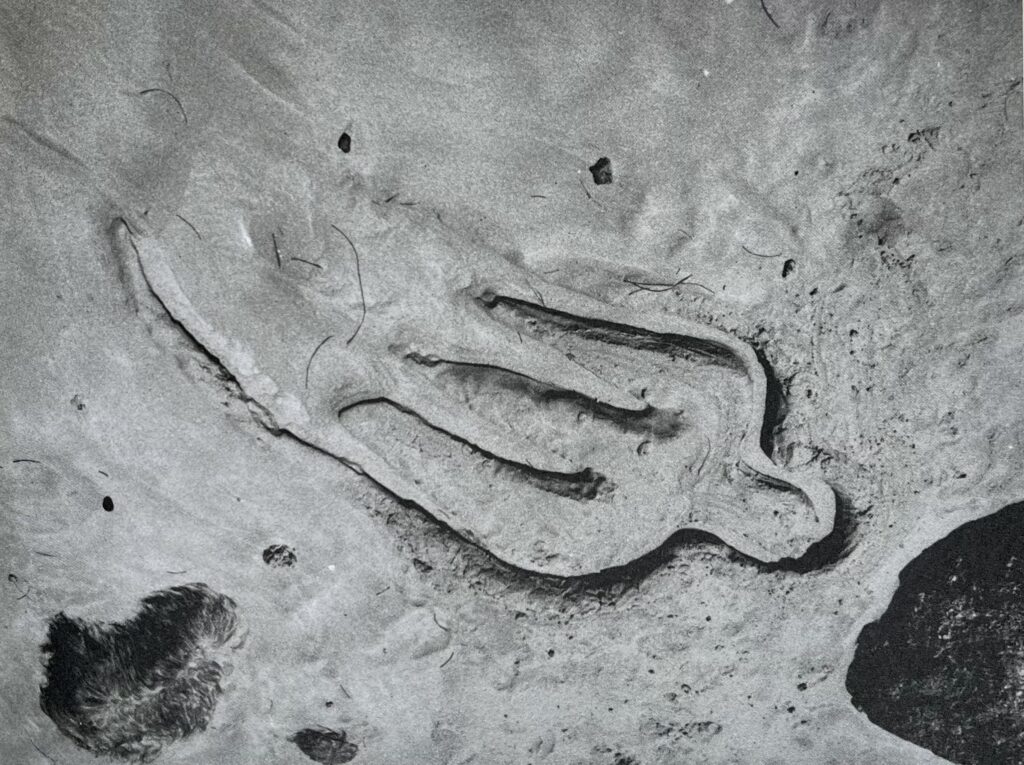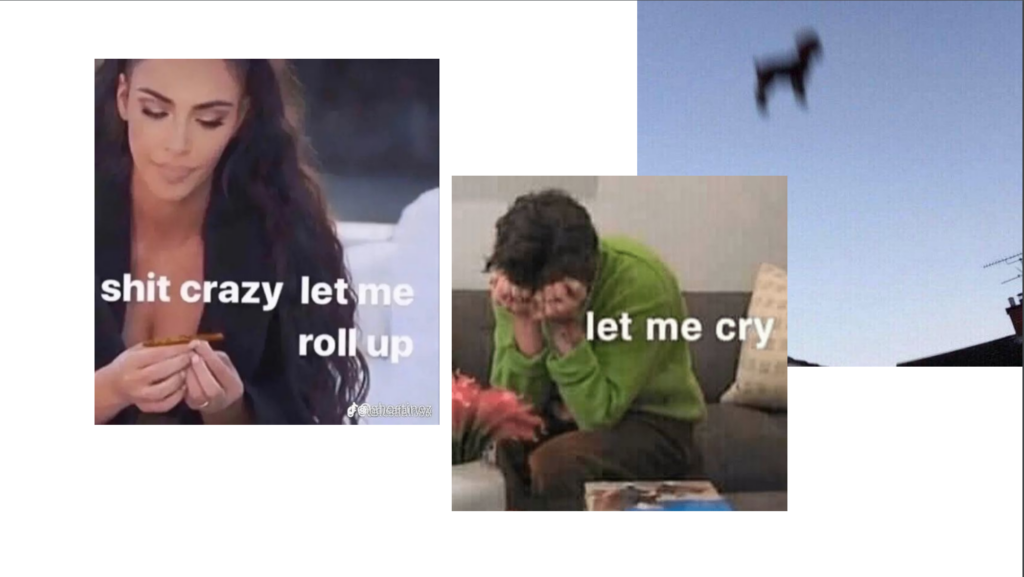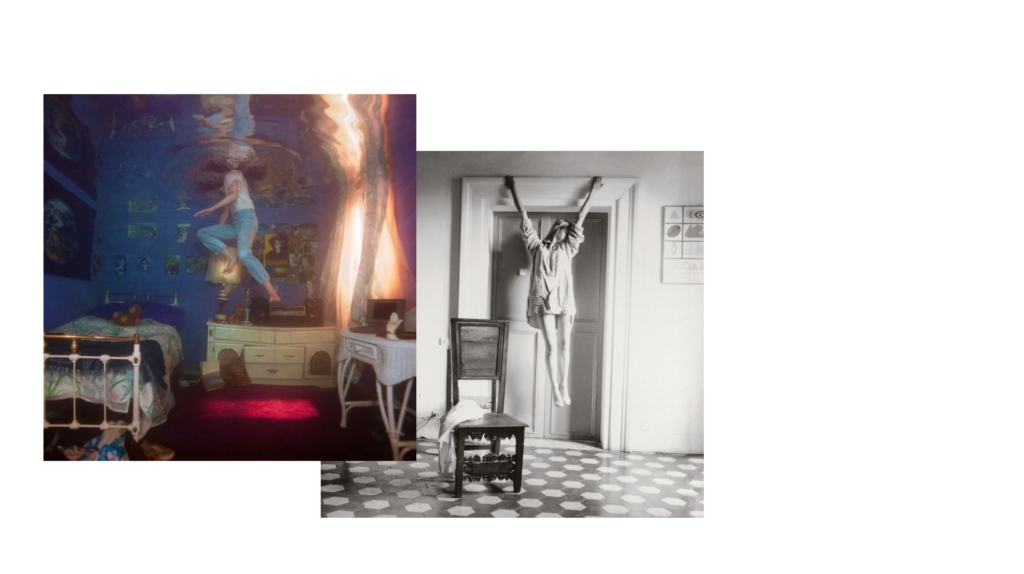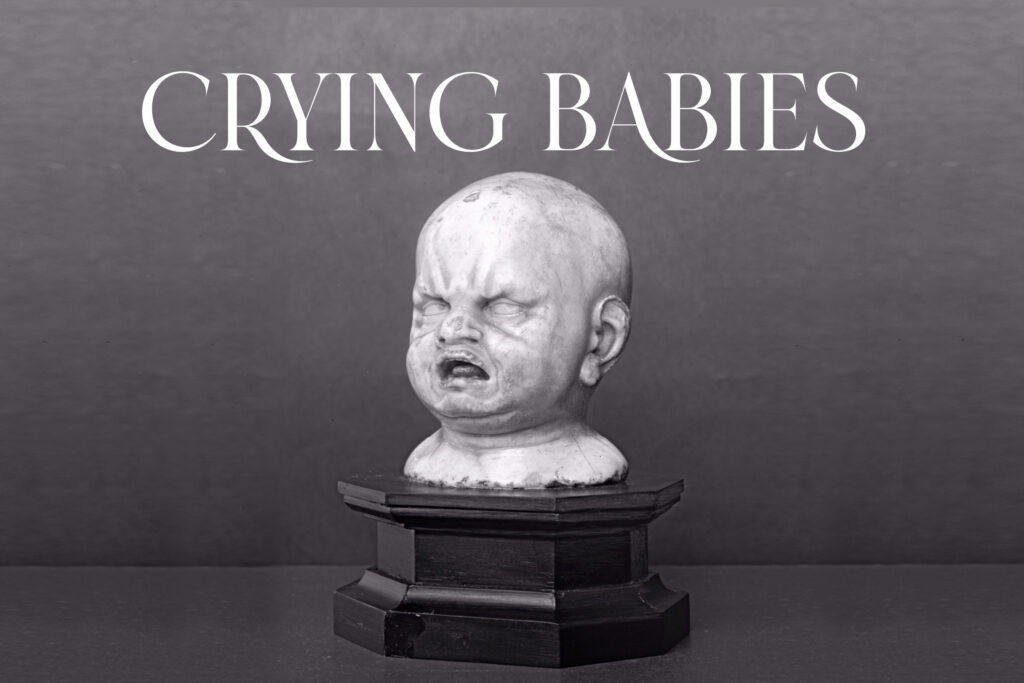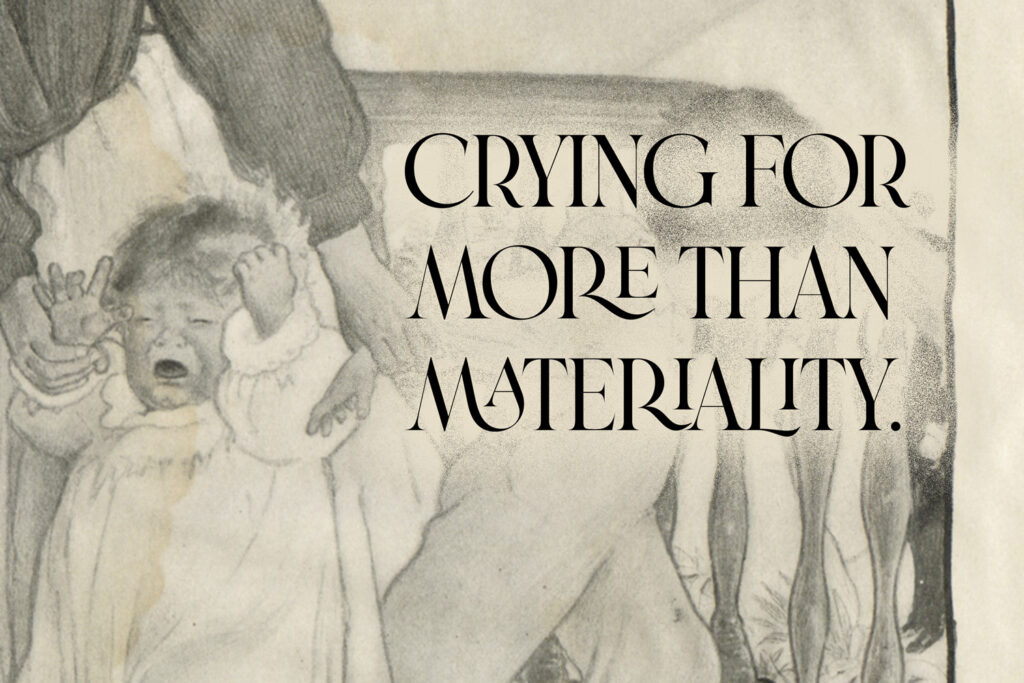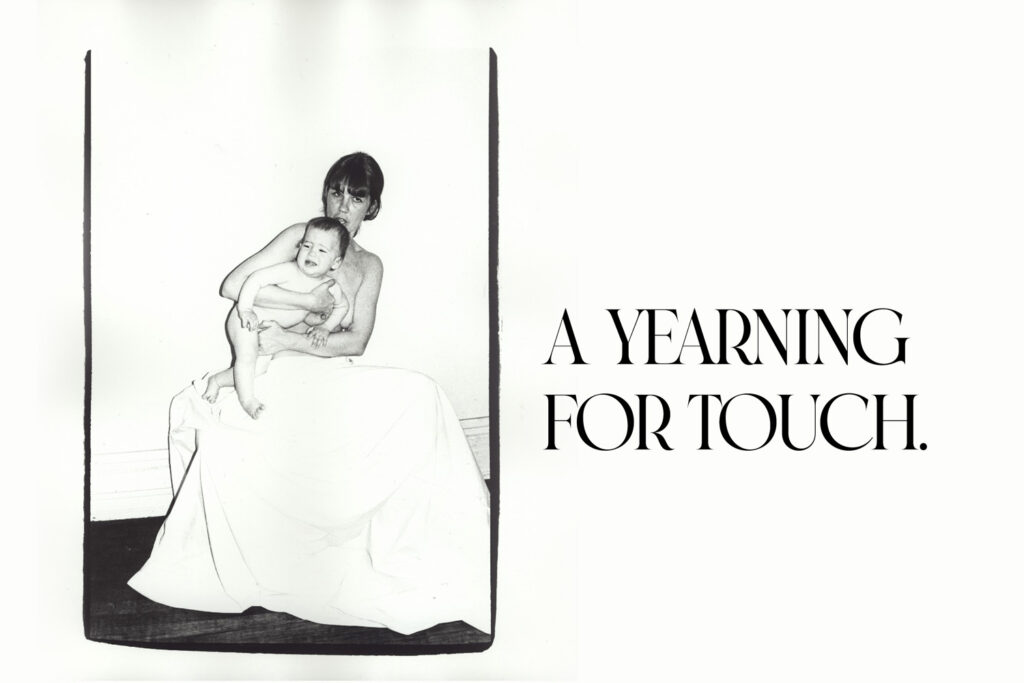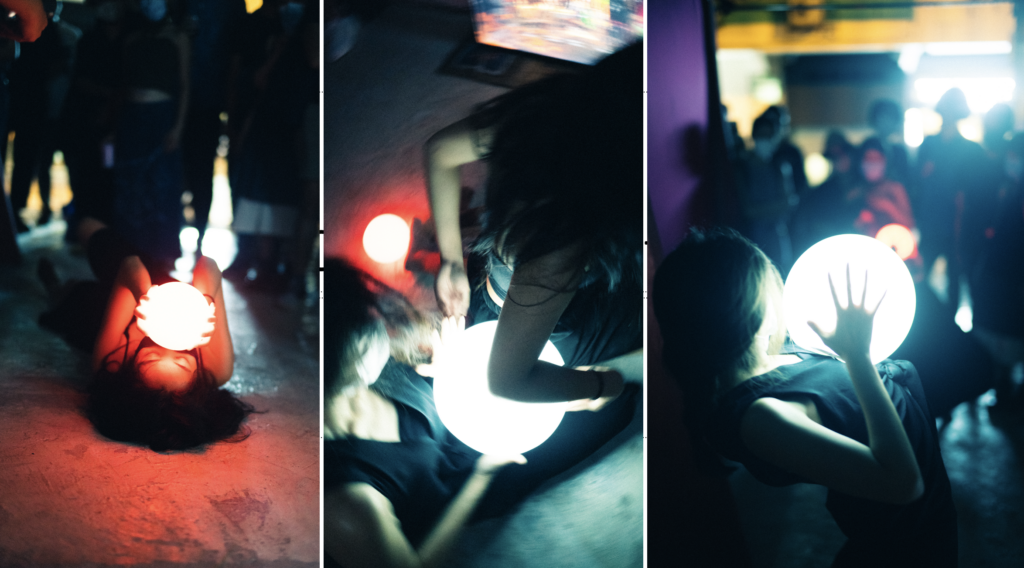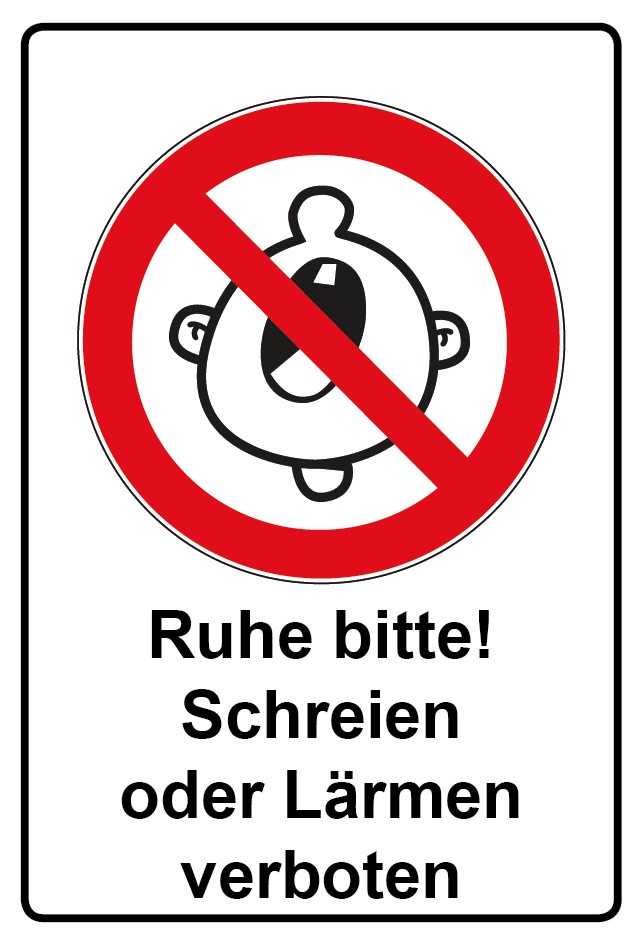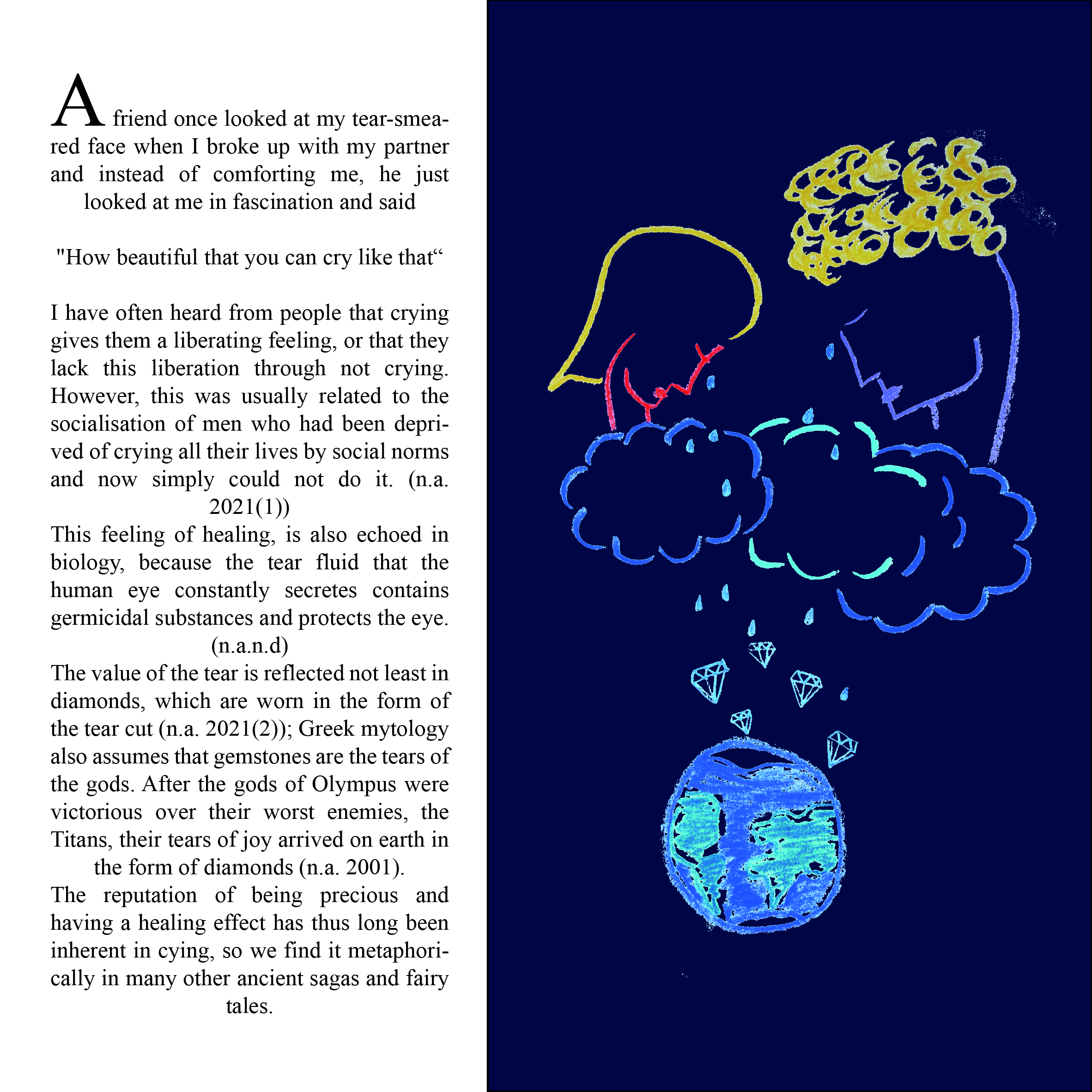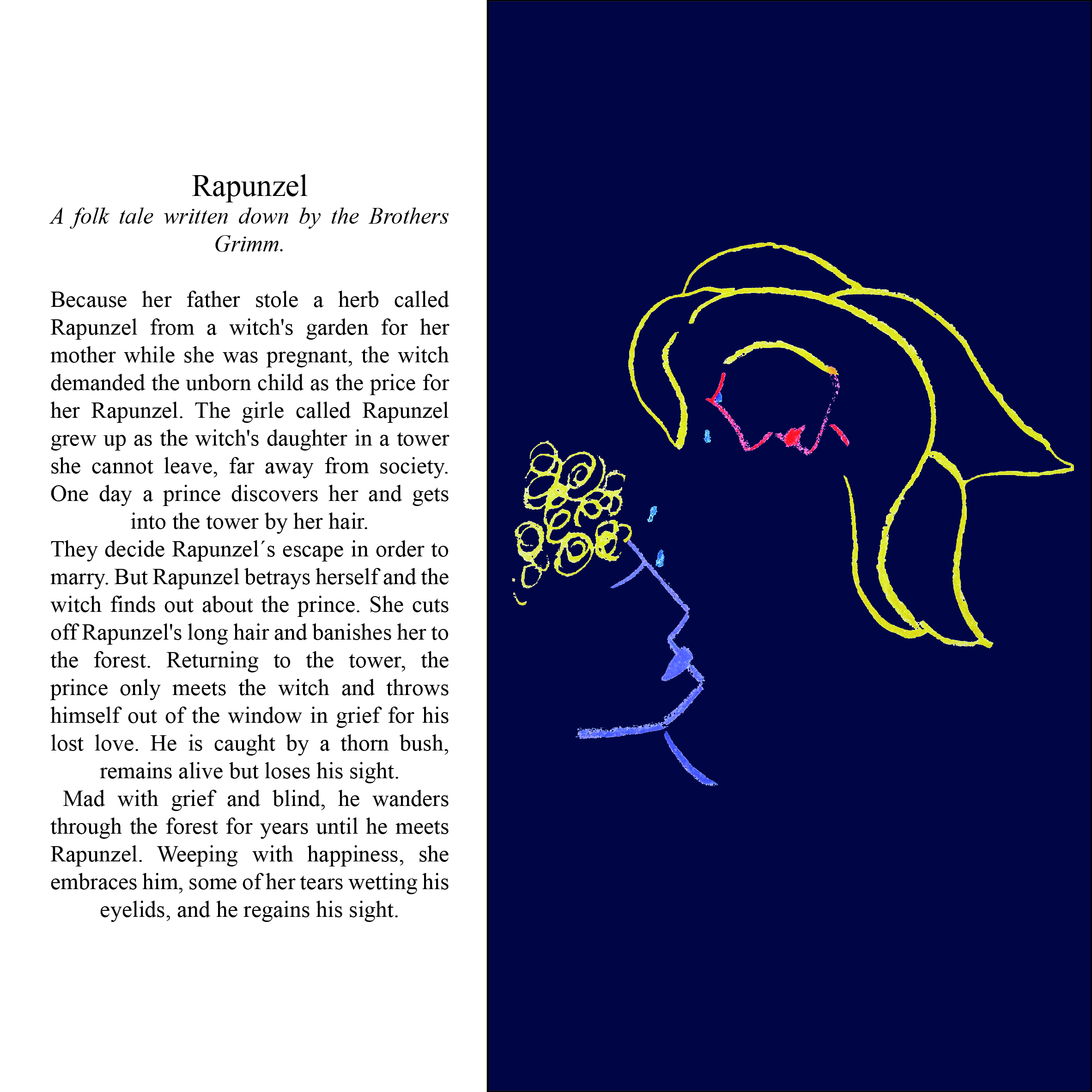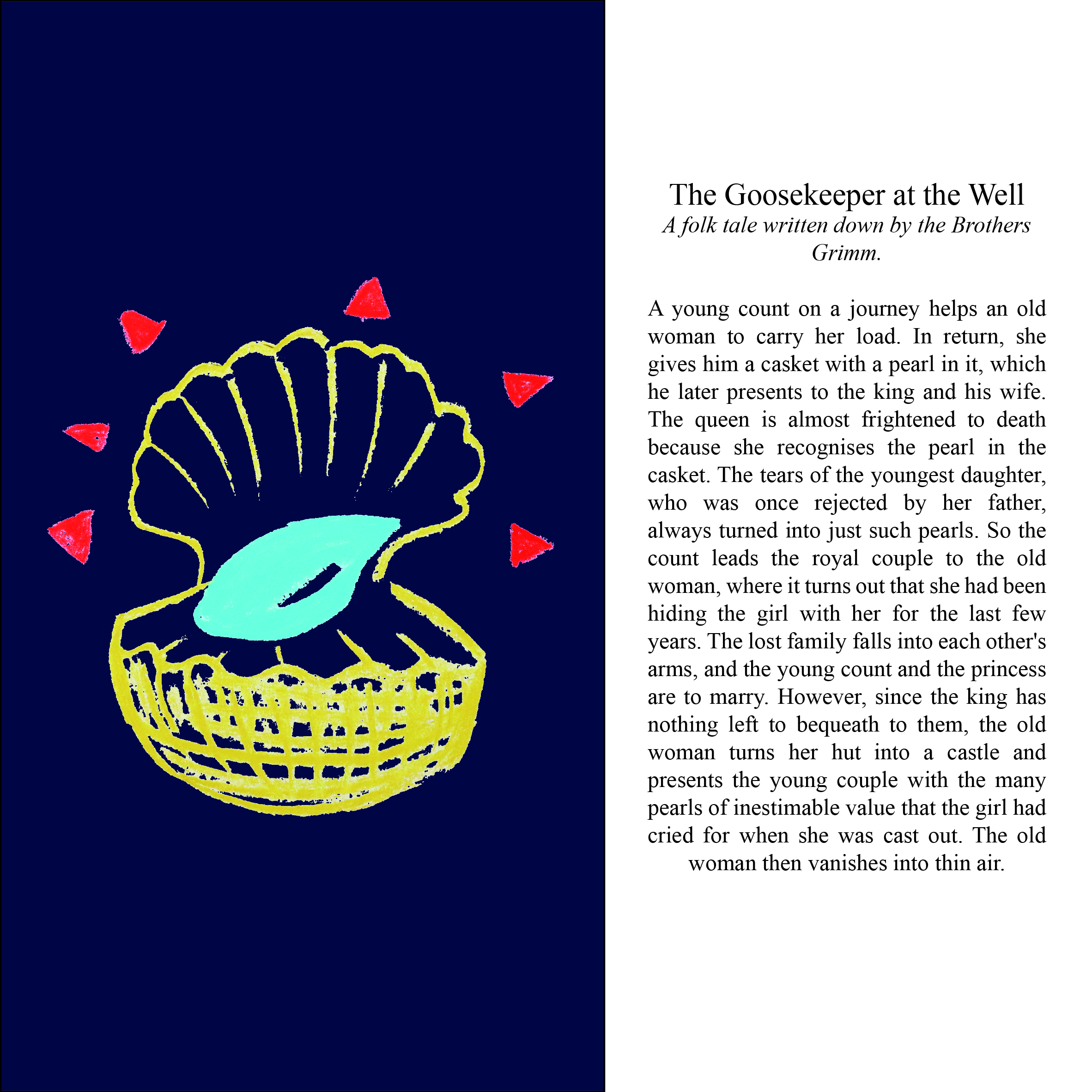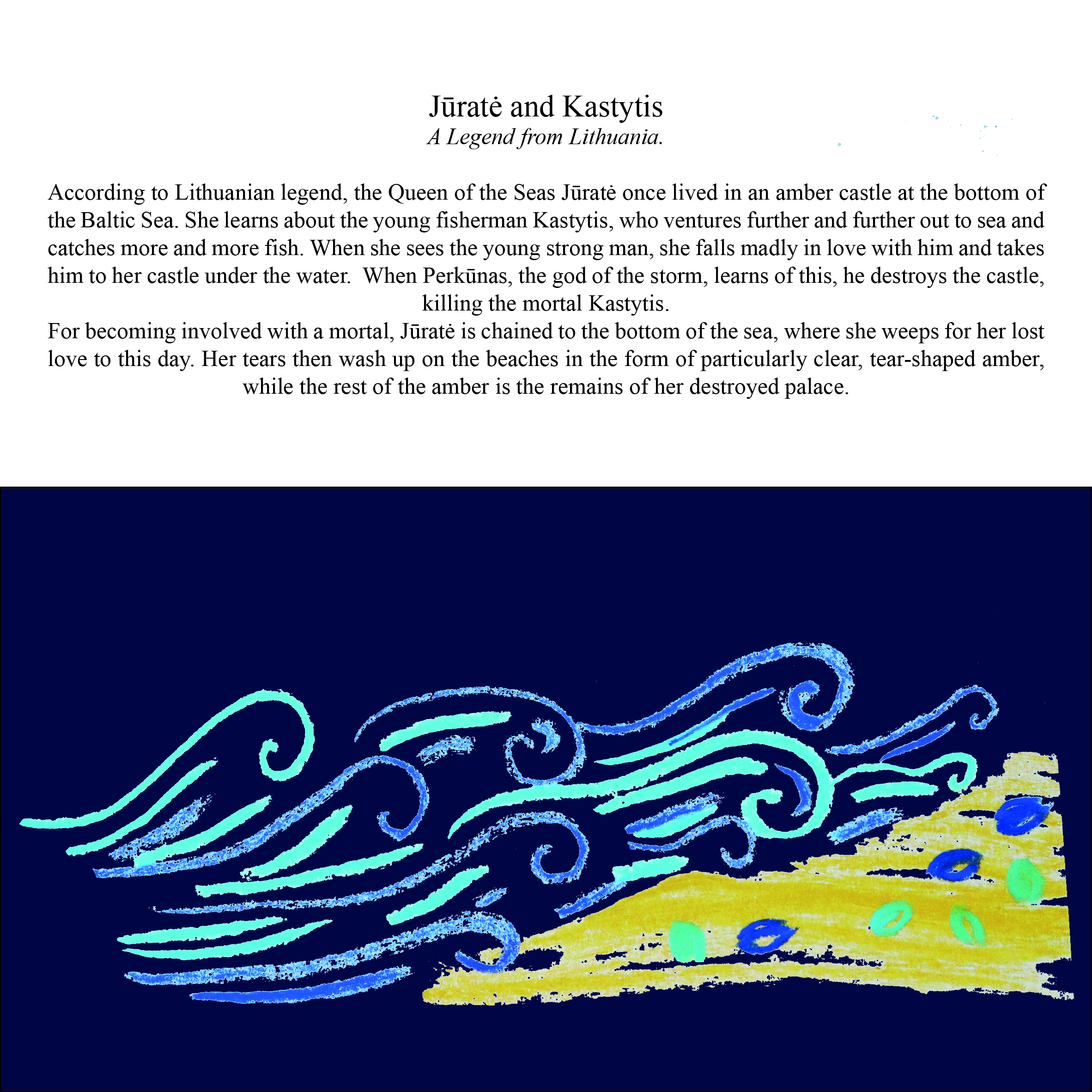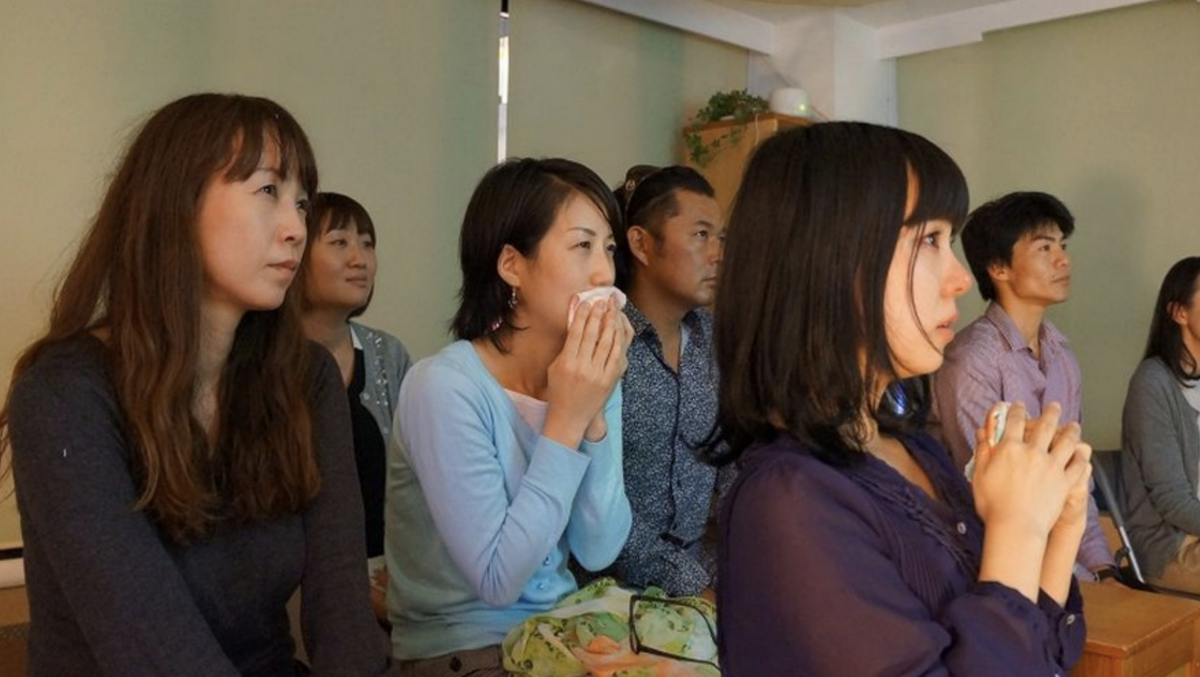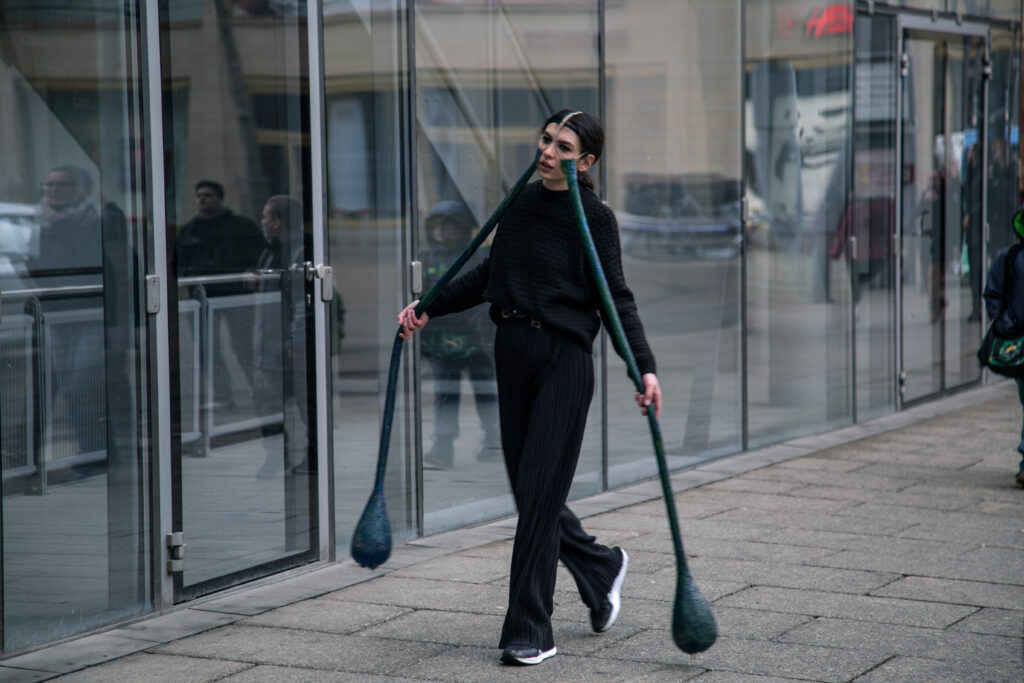Merkwürdig – ich habe mich dafür entschieden, die Menschen meiner Befragung als “Existing Crying Material” zu benennen.
Aus meiner Beschäftigung mit der Materie des Weinens sowie mit einigen Wörtern, die vorwiegend mit dieser Aktion in Zusammenhang gebracht werden oder als gedankliche Überschriften für Ausführungen zur Funktion der Tränen dienen könnten, erschlossen sich in mir mehr und mehr die Vorteile meines Weinens. Gleichzeitig bewegte ich mich dahingehend in eine Verwunderung über die, die es nicht tun. Während und schon vor meiner Ausarbeitung fielen mir zu jedem meiner gewählten Begriffe vereinzelte Fragen ein, deren ich, wie ich nahe dem Wasser gebaut bin, nicht fähig war, zu beantworten. Meine Neugierde ließ mich jedoch in der Folgezeit aufhorchen und ich musste mich bei Freunden und Bekannten von mir nach dem Vorkommen ihrer Tränen erkundigen. Es ergab sich ein unerwarteter Kreis an Menschen, die sich das Heulen offenbar abgewöhnt haben – von ein Mal im Jahr bis hin zur Dauerhaftigkeit, dass eine Erinnerung an das letzte Mal verkommen ist. Meinem Entschluss, Antworten zu wollen, folgte etwas unsicher und spontan die erste Interview-Situation. Ich hatte offenbar nicht in Betracht gezogen, dass unser Gespräch über das Thema ein Ausdruck von Leid, eine Nachricht von Hilflosigkeit, eine Reaktion der Hingabe, ein Gesicht frei-gelassener Stimmung, sprich Weinen, eventuell Emotionalität mit sich führt und meine Vorstellung eines bequemen Dialogs wurde nicht erfüllt. Als Ersatz erhielt ich aber Ehrlichkeit und den Hinweis darauf, dass Gesprächsbedarf besteht. Besser vorbereitet und motiviert durch die Intensität der ersten Aussprache, konnte ich bis heute von vier weiteren Personen Eindrücke sammeln und werde sie hiermit schriftlich wiedergeben. Alle Interviews begannen mit einer kurzen Aufklärung über meine Intention, danach wurden die Fragen in gleicher Art und Reihenfolge gestellt.
T. (he/him 26) F.(he/him, 23) L.(she/her, 22) P.(he/him, 30) M.(he/him, 39)
Frage 1 Wann hast du das letzte Mal geweint?
T: Daran kann ich mich nicht erinnern, aber das muss schon zwei, drei Jahre her sein.
F: Ich kann mich nicht genau daran erinnern, wann ich das letzte Mal richtig geweint habe. Das letzte Mal, von dem ich noch weiß, ist so ca. 2015 gewesen, vielleicht habe ich aber dazwischen etwas verdrängt.
L: Meine Erinnerung ist schlecht, aber ich glaube Ende Oktober/Anfang November war das.
P: Ich kann mich nicht erinnern – so 2014/2015 in etwa.
M: Vor ungefähr einem halben Jahr habe ich ein wenig geweint, “richtig” geweint habe ich zuletzt 2018.
Frage 2 Wie intensiv ist dein Schmerzempfinden? (körperlich/seelisch)
T: Körperlich bin ich kein sensibler Mensch, seelisch schon sehr, ich bekomme meine Grenzen aber nicht wirklich mit, das ist mehr wie träumen.
F: Körperlich ist mein Empfinden vermutlich ganz normal, seelisch ist es kaum zu spüren.
L: Körperlich und seelisch bin ich zwar sehr empathisch, aber ich denke, ich kann gut mit Schmerz umgehen und/oder lasse ihn nur sehr schwer zu.
P: Mein eigenes Schmerzempfinden ist ja subjektiv. Ich finde es schwer, die Intensität da festzustellen. Körperlich bin ich nicht so empfindlich. Seelisch quäle ich mich schon oft.
M: Mein körperliches Schmerzempfinden ist eher wenig intensiv, da ich meinen Körper sehr viel in Situationen bringe, in denen Verletzungen vorprogrammiert sind. Ich denke, ich habe gelernt, durchzuatmen und akuten Schmerzen innerlich keinen selbst-verstärkenden Resonanzraum zu geben. Mein seelisches Schmerzempfinden schwankt zwischen hochsensibel und abgebrüht. Generell bin ich sehr verletzt und verletzbar und habe mir deswegen jede Menge Methoden und Werkzeuge zur Prävention angeeignet.
Frage 2a Wann ist der Schmerz für sich „zu groß“, nicht mehr ertragbar?
T: Wenn ich mir selber Schmerzen zufüge, höre ich dann auf, wenn ich nicht mehr kann. Irgendwann fällt mir auf, dass etwas nicht stimmt und ich verlasse die schmerzhafte Situation oder versuche, einfach zu fliehen.
F: Ich kann keine Situationen mehr beschreiben, die nicht ertragbar sind. Ich könnte mir vorstellen, mein seelisches Schmerzempfinden schon vor längerer Zeit überschritten zu haben und um dem ganzen Leid nicht ausgesetzt zu sein, schottet sich mein Bewusstsein von Emotionen ab, bei Trauer sowie Freude.
P: Da ich noch am Leben bin, hab ich „zu groß“ wohl noch nicht gehabt.
M: Wenn Schmerzen keine Zeit und keinen Raum haben, abzuheilen und dann weitere Verletzungen dazukommen.
Frage 3 Glaubst du, dass Tränen eine Katharsis begleiten? Oder Auslösen? Katharsis = Läuterung, Klärung, Aufbereitung, Heilung, Reinigung
T: Ich glaube schon, dass das Weinen ein gesünderes Bild auf meine Schmerzen geben würde, wenn ich es könnte. Ob es ein begleitender oder auslösender Effekt ist, spielt dabei keine Rolle.
F: In gewisser Weise. Ich glaube es ist wichtig, Gefühle zulassen zu können und sie mit sich selbst und anderen zu kommunizieren. Weinen ist für mich ein Ausdrücken von Emotionen (gute und schlechte). Es kann einem selber emotionale Themen zeigen, in Beziehung zu anderen bei der Kommunikation helfen und es verschafft die Möglichkeit, sich selbst sehr ehrlich zu begegnen. Da gibt noch sehr viel mehr, aber das kann ich nicht alles auffassen.
L: Ich fühle mich, auch wenn ich selten weine, oft sehr befreit danach. Aber ich glaube, es gibt auch genug Wege abgesehen vom Weinen mit Emotionen umzugehen oder Schmerz zu lösen.
P: Ich denke schon, dass das miteinander zu tun hat.
M: Ich denke, es ist wichtig, sich auch mal seinem Kummer voll und ganz hinzugeben. Dabei meine ich nicht Dramatisieren, sondern in einem geschützten Umfeld Schmerz und Trauer zu erleben. Da gehören Tränen dazu, ja. Richtig weinen ist wichtig und nichts schlimmes, sondern ein Zeichen für einen sehr gesunden Prozess. Daher: Auslösen Nein – Begleiten definitiv.
Frage 3a Wann schätzt du dich als „geläutert“ ein?
T: Wenn ich beschäftigt bin, wenn mich Aktionen umgeben, vor allem draußen in der Natur. Ich könnte bestimmt auch besser weinen in der Natur.
F: Wenn ich wieder Gefühle zulassen kann. Ich denke, mal wieder richtig zu weinen und dem eingesperrten Schmerz die Tür zu öffnen, wäre ein guter Schritt
L: Ich kann, ehrlich gesagt, nur schwer etwas mit dem Begriff anfangen, weil er irgendwo sehr esoterisch wirkt. Aber losgelöst/ befreit von Emotionen fühle ich mich, wenn ich diese mit engen Freunden teile, oft auch mit sehr vielen Personen, die mir nahe sind, denn bei einer Person reicht das oft nicht aus.
P: Das ist mir ein zu religiöser Begriff. Ich schätze mich nie so ein.
M: Das lässt sich direkt an meinen Konsummustern ablesen. Wenn der Punkt gekommen ist, dass ich keine Substanzen mehr nehme, dann ist das wahrscheinlich auch der Zeitpunkt, wo ich mich innerlich im Gleichgewicht befinde.
Frage 4 Fehlt dir ein Drang oder der Wunsch nach Besserung? Hoffst du viel?
T: Ich habe schon häufig sehr unrealistische Wünsche, aber ich hoffe nicht viel auf Besserung, ich habe allgemein nicht viel Hoffnung. Aber mein Streben nach Gesundheit, nach Klar-sein, Nüchtern-sein – das ist dringlich und dagegen anzukämpfen ist sehr schwierig, vielleicht weil ich weiß, das es nicht so ist.
F: Der Wunsch nach Besserung fehlt nicht. Ich bin davon überzeugt, dass ich das Leben irgendwann wahrnehmen kann, wie ich es mir wünsche, bzw. bin ich mir sicher, dass es möglich ist, Veränderung zu schaffen. Der Drang ist nur noch nicht groß genug und ich brauche sehr viel Kraft, mich auf einem momentan akzeptablen Level zu halten.
L: Ich bin echt zufrieden mit meinem Leben und meine das auch ehrlich. Klar hoffe ich auf Dinge, aber nicht übertrieben und meisten passieren auch mehr Dinge zufällig, auf die ich nicht hoffe, aber sehr unerwartet schön sind.
P: Der Drang oder Wunsch nach Besserung fehlt mir definitiv, ich hoffe auch nicht sehr viel – was aber vielleicht auch nicht nur schlecht ist.
M: Nein, mir fehlt kein Drang nach Besserung. Gleichwohl ist mein Handeln sehr davon geprägt, dass ich Dinge sehr durchdenke und von den Folgen und Konsequenzen her betrachte. Hoffen macht immer nur dann Sinn, wenn es keinen Plan mehr gibt.
Frage 4a Wie fühlst du dich mit deiner jetzigen Situation/ deinem Stand im Leben?
T: Da ist eine Art Einsamkeit, wie verlassen von einem Ich, das etwas anders gemacht hätte.
F: Ich fühle mich gerade so wohl genug. Ich habe Angst, etwas an meiner Situation zu ändern und „Besserung“ zu schaffen, weil ich mich dann unbekannten Dingen ausliefere, die meinen etwas fragilen Zustand kaputt machen könnten.
L: Ich denke, dass sich diese Frage mit meiner vorherigen Antwort auch beantwortet hat.
P: Blicke eher auf eine wilde Zeit zurück und kann mich darüber auch sehr freuen. Ich habe mich aber auch damals schon nicht gut dabei gefühlt. Retrospektiv werde ich die jetzige Situation bestimmt als mehrheitlich positiv sehen. Gerade, im Moment ist alles recht grau.
M: Ich bin sehr unzufrieden, aber das ist okay, denn vieles hat sich schon gebessert und ich arbeite viel an mir und meiner Idee, wie es weitergehen soll und wo ich hin möchte. Manchmal bin ich zufrieden damit, wie sich die Dinge entwickeln und wachsen
Frage 5 Was hältst du von Teilnahmslosigkeit?
T: Teilnahmslosigkeit ist ein Schutzmechanismus und nicht zwangsläufig schlecht, vielleicht aber erlogen. Weinen macht auf jeden Fall ehrlicher.
F: Naja – nicht so cool. Ich kenne Teilnahmslosigkeit eher als anhaltender Zustand. Eine Gleichgültigkeit für fast alles, welche einem ziemlich Angst machen kann. Es ist vermutlich ein Schutz-Mechanismus, um seelischen Schmerz nicht zuzulassen. Es tut dem Selbstwert aber nicht gerade gut. sich als apathisch, kalt und desinteressiert wahrzunehmen. Es fühlt sich so an, als würde man sich selbst und anderen beim Leben zuschauen ohne, Einfluss nehmen zu können.
L: Kommt darauf an, in welchem Bezug. Den Zustand kenne ich in bestimmten Situationen, wenn der Kopf sich plötzlich von dem Äußeren trennt und ein Gefühl der Entfremdung eintritt. Eine dauerhafte Teilnahmslosigkeit ist natürlich echt beschissen und mir tut es leid, wenn Menschen so fühlen. Im aktiven Sinn (zB. politisch) hat man aber immer eine Entscheidungskraft. Teilnahmslos zu sein ist in diesem Sinne auch eine Entscheidung.
P: Das bin ich hin und wieder und finde das verständlich, aber habe da keinen emotionalen Bezug zu, glaub ich.
M: Ich halte Teilnahmslosigkeit für gleichermaßen negativ als auch nachvollziehbar. Ich bin sehr gerne neugierig und entdecke wirklich gerne neue Dinge, Teilnahmslosigkeit bedeutet für mich das genaue Gegenteil.
Frage 5a Was ist für dich wahrscheinlicher? Du weinst, um deine Empfindungen und dein Bewusstsein völlig für die Situation zu öffnen. Oder Du weinst, um dich vorerst abzulenken, deine Wahrnehmung der Ereignisse durch den innerlichen Vorgang des Weinens einzuschränken?
T: Ich glaube, ich würde eher aus einer Überforderung heraus weinen und damit versuchen, mich abzuwenden.
F: Du weinst, um deine Empfindungen und dein Bewusstsein völlig für die Situation zu öffnen.
L: Absolut Variante 1!
P: Zweiteres eher.
M: Definitv A
Frage 6 Hast du Weinen schon einmal als unsittlich empfunden? Wann?
T: Nein, Weinen ist nie unsittlich, es gibt in jeder Situation genug Gründe zu weinen.
F: Früher ja, mittlerweile nein.
L: Mittlerweile nicht, aber als Kind wurde mir oft gesagt, ich dürfe nicht weinen, ich denke, deswegen kann ich auch heutzutage nur sehr sehr selten weinen.
P: Ich bin als Junge in den 90ern sozialisiert worden – dass Weinen unsittlich ist, wurde mir wohl anerzogen. Ich weiß zwar, dass das rationaler Unsinn ist, aber empfinden werde ich es trotzdem oft noch.
M: Weinen ist für mich dann unsittlich, wenn es Mittel zum Zweck ist – seelische Erpressung oder Ähnliches. Ansonsten ist Weinen für mich selbst eher etwas sehr Privates, aber ich finde nichts negatives daran, wenn andere Menschen das anders handhaben
Frage 6a Kennst du das Gefühl nicht weinen zu können, weil du damit voraussichtlich auf Ablehnung triffst?
T: Ich kenne das Gefühl, jemanden noch wütender zu machen, wenn ich weine. Wenn ich als Kind von meinem Vater angeschrien wurde, trat dieses häufig auf.
F: Auch eher noch aus der Jugend/Kindheit, vermutlich gesellschaftlich begründet. „Männer sollen nicht weinen“ und so eine Scheiße.
L: Derzeitig: nein, weil ich ein sicheres schönes Umfeld habe. Aber dann und wann irgendwie schon, weil ich Schwäche zeige oder eher noch das Gefühl habe, andere Personen zu belasten, die viel um die Ohren haben. Das denke ich mir nur, in konkreten Situationen, ist mir das vermutlich weniger bewusst.
P: Ja.
M: Nein.
Frage 6b Fehlt dir eine Form der Kommunikation, wenn es dir schlecht geht oder du Hilfe benötigst? Wie gleichst du das aus?
T: Auf jeden Fall erhalte ich Ausgleich durch Aggression oder Rückzug. Ich weiß aber nicht, ob ich damit wirklich um Hilfe bitte, weil ich damit eher Angst auslöse bei meinem Gegenüber. Meistens ziehe ich mich dann doch zurück.
F: Ich versuche, glaube ich, aktiv dafür zu sorgen, dass ich meine Probleme, Sorgen, Ängste für andere verharmlose, um keine Belastung darzustellen. Ich weiß nicht, ob ich eine bewusste Ausgleich-Strategie habe, aber ich mache ziemlich zynische Witze über mich selbst oder ernste Sorgen. Vielleicht ist das unterbewusst, um es rauszulassen oder zu verbalisieren aber auch um es ertragbar zu machen und das Gewicht für mich und andere aus schweren Themen zu nehmen.
L: Nein, habe meine Freunde und bin sehr gut vernetzt mit lieben Menschen.
P: Ja, ich gleiche das durch Lesen oder Videospiele aus – ein klassischer Eskapismus.
M: Schwierige Frage, aber ich vermute Nein.
Frage 7 Lies dir erst einmal dieses Zitat durch: Was tut es, wenn das Strahlen, das einst so hell war, nun für immer von meinem Auge weggenommen ist, wenn nichts die Stunde des Glanzes in dem Gras, der Herrlichkeit in der Blume zurückbringen kann? Wir wollen nicht betrübt sein, lieber Kraft finden in dem, was übrig bleibt, in dem ursprünglichen Mitgefühl, das gewesen ist und immer sein muss, in den beruhigenden Gedanken, die aus menschlichen Leiden entspringen, in dem Vertrauen, das durch den Tod hindurch blickt, in Jahren, welche den philosophischen Geist bringen. – William Wordsworth Kennst du diesen beschriebenen Geist? Was fällt dir dazu ein?
T: Ich glaube schon, das ist wie Abgeklärtheit, körperlich wie Stille, aber auch Schmerz, weil der Druck meiner Gedanken irgendwo hin muss.
F: Den beschriebenen Geist kenne ich, ist mir aber etwas zu absolut. In verdrehter Art und Weise mag ich den Zustand, die Gedanken über mein eigenes „Leid“. Auf das Chaos in meinem Kopf ist Verlass und ich kenne mich dort mittlerweile ganz gut aus. Dazu gehört aber auch ein Wunsch nach Veränderung, die ich definitiv für möglich halte. Ich hab nirgends so viel gelernt, wie von mir selber und ich mag meine Gedanken. Wenn ich ihnen irgendwann so Ausdruck verleihen kann, wie ich es mir wünsche, ehrlich zu mir selbst sein kann und die Angst davor verliere, verletzlich zu sein, dann kommt dieses Strahlen bestimmt wieder.
L: Das ist mir gerade zu viel.
P: Ich glaube, das Strahlen könnte noch gleich hell sein, wenn wir nicht in so einer post-kapitalistischen Dystopie leben würden.
M: Viele Menschen sind sehr bemüht, Dinge konservieren zu wollen um sie bei Bedarf wieder auszupacken. Wir wollen Momente konservieren und über die Zeit tragen. Wir wollen uns selbst konservieren. Von Geburt an spüren wir den Verfall und den schleichenden Verlust von dem Geschenk, was wir „Leben“ nennen, in etwa wie: “Warum soll das so sein und kann das nicht geändert werden?.” Ich denke, der Mensch ist sehr einfallsreich darin, Unsterblichkeit erlangen zu wollen – ganz egal ob physisch oder mit dessen Werken. Wir möchten nicht vergessen oder vergessen werden – wir möchten bleiben. Und dieses Problem lässt uns erfinderisch werden.
Frage 7a William Wordsworth spricht auch von Gedanken, die „zu tief“ sind, um Tränen auszulösen – also darüber hinaus gegangen sind und keine solche emotionale Regung mehr auslösen. Gibt es Gedanken für dich, die „zu tief“ sind, um deswegen zu weinen?
T: Ja, wenn ich über die Existenz von Menschen nachdenke und über die Zeit, die hinter uns liegt, das fühlt sich zu groß an für meine Traurigkeit.
F: Für mich sind das vermutlich Gedanken über Gedanken oder Gedanken über Emotionen. Nichts, was direkt mit einer Emotion verknüpft ist – eher wie die Metaebene des eigenen Seins.
L: Ja, irgendwie kenne ich das Gefühl. Oftmals wenn es nicht um konkrete Situationen geht, die leicht zu lösen sind, sondern ich hatte es bei langfristigen ungeklärten Verlust eines Menschen und dem erdrückenden Ohnmachtsgefühl gegenüber des kapitalistischen Systems und allen damit verbundenen Zusammenhängen, sei es im Weltgeschehen oder im persönlichem Leben.
P: Ich glaube eher, dass ich abgestumpft bin und deshalb keine emotionale Regung mehr habe. Es liegt nicht daran, dass meine Gedanken „zu tief“ sind – was auch immer das bedeuten soll.
M: Ja, jede Menge. Mir ist beispielsweise absolut klar, dass mein Dasein hier nur kurzfristig ist und die Natur und der Planet mich nicht brauchen. Wenn einem klar wird, wie unerheblich die eigene Existenz für Alles drum herum ist, möchte man schon traurig werden. Aber wir nehmen es hin, wir ignorieren es oder wollen es nicht wahrhaben.
Im nochmaligen Durchlesen der Antworten konnte ich für mich feststellen, dass trotz der Gemeinsamkeit, die alle Gesprächspartner teilten, der Großteil meiner Fragen mit einer markanten Unterschiedlichkeit beantwortet wurde. Als Person, die zu jedem Teilnehmer, jeder Teilnehmerin einen persönlichen Bezug hat und somit durch das Erleben dieser auch einen Blickwinkel auf die Charaktere besitzt, der von Eindrücken beeinflusst wird, ist es nicht einfach, eine rationale Auswertung zu geben. Dennoch meine ich, Schlüsse ziehen zu können, die zum Beispiel auf gleiche Antworten mehrerer Personen, den Umfang der Antworten oder die Art, mit der sich vage oder gegebenenfalls sicher ausgedrückt wurde, folgern. Allerdings ging es mir ursprünglich eher nicht darum, eine Form von Statistik aufzubauen – meine Gründe für das Zusammenkommen mit jeder dieser Personen lagen in der Möglichkeit des besseren Verständnis für ein Thema, dass in der Umsetzung zwar jedem geläufig ist, aber in der theoretischen Beschäftigung viele Lücken aufweist, dabei nicht nur im forschenden oder lehrenden Kontext, sondern eben auch im eher verborgenen Privaten. Tränen sind eine Funktion, die als Reflex selbstverständlich und mühelos gegeben scheint. Offenbar verhält sich das Weinen im emotionalen Gebrauch aber als derart anfällig und beeinflussbar, dass jeder eigene Umstand die Mühelosigkeit und den Nutzen behindern kann. Ich fühle mich erweitert im Denken und möchte weiterhin mehr über die Tränen anderer lernen, weil für mich doch eins über sie mittlerweile feststeht: Welchen Zweck sie erfüllen und ob sie positive oder negative Rollen spielen, entscheidet der Mensch, dem die Augen gehören, aus denen sie fließen. Dabei ist es aber ein Gewinn, sich einmal dahin zu begeben, wo sie entstehen. Fragen zu stellen hat mir einen ersten Schritt gezeigt, vor der Komplexität meiner Gefühle nicht zurückzuweichen. Ihr eigener Niederschlag ist vorurteilsbehaftet, kann aber durch Neugierde Selbstbewusstsein und Akzeptanz schaffen.
